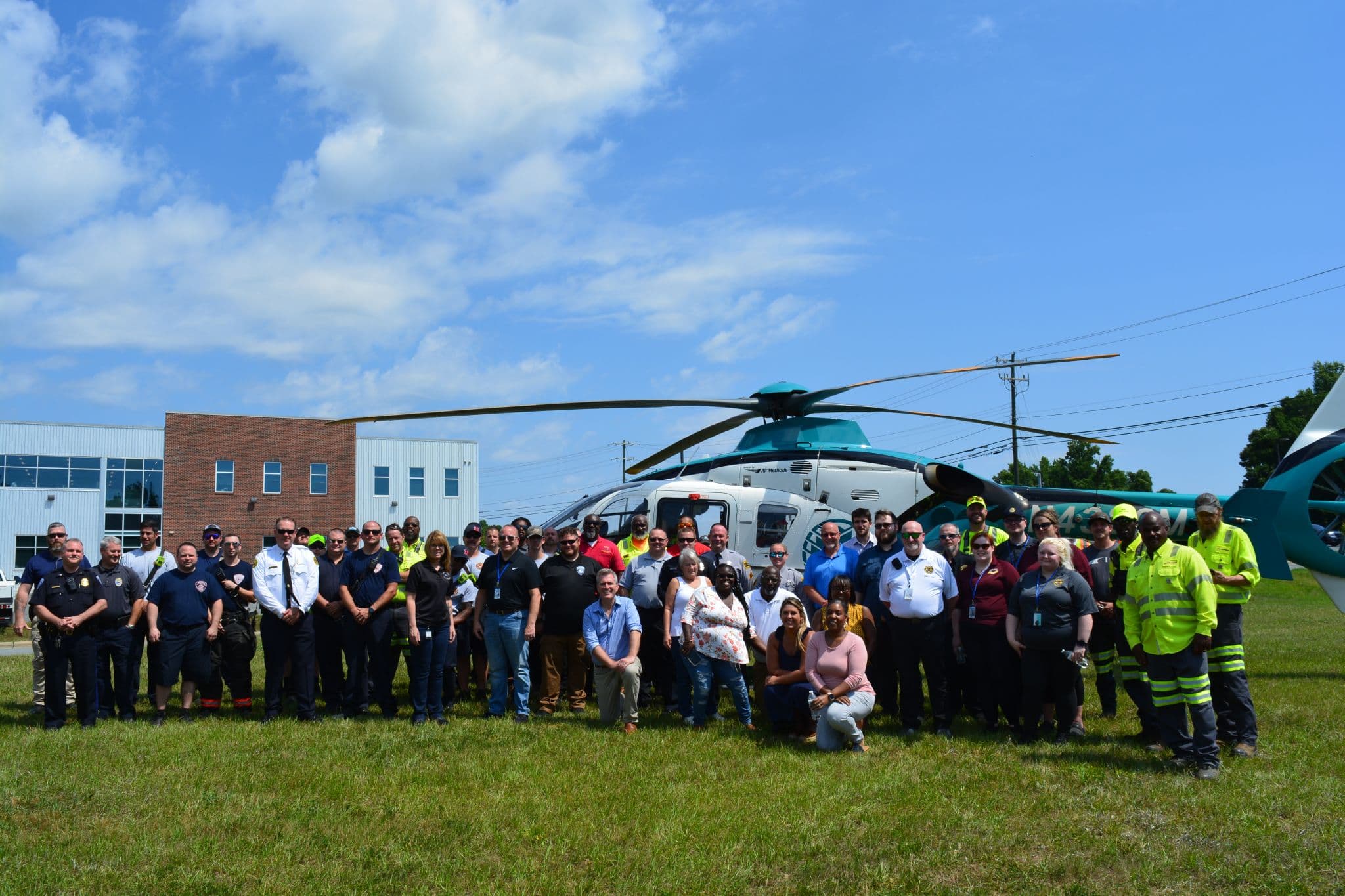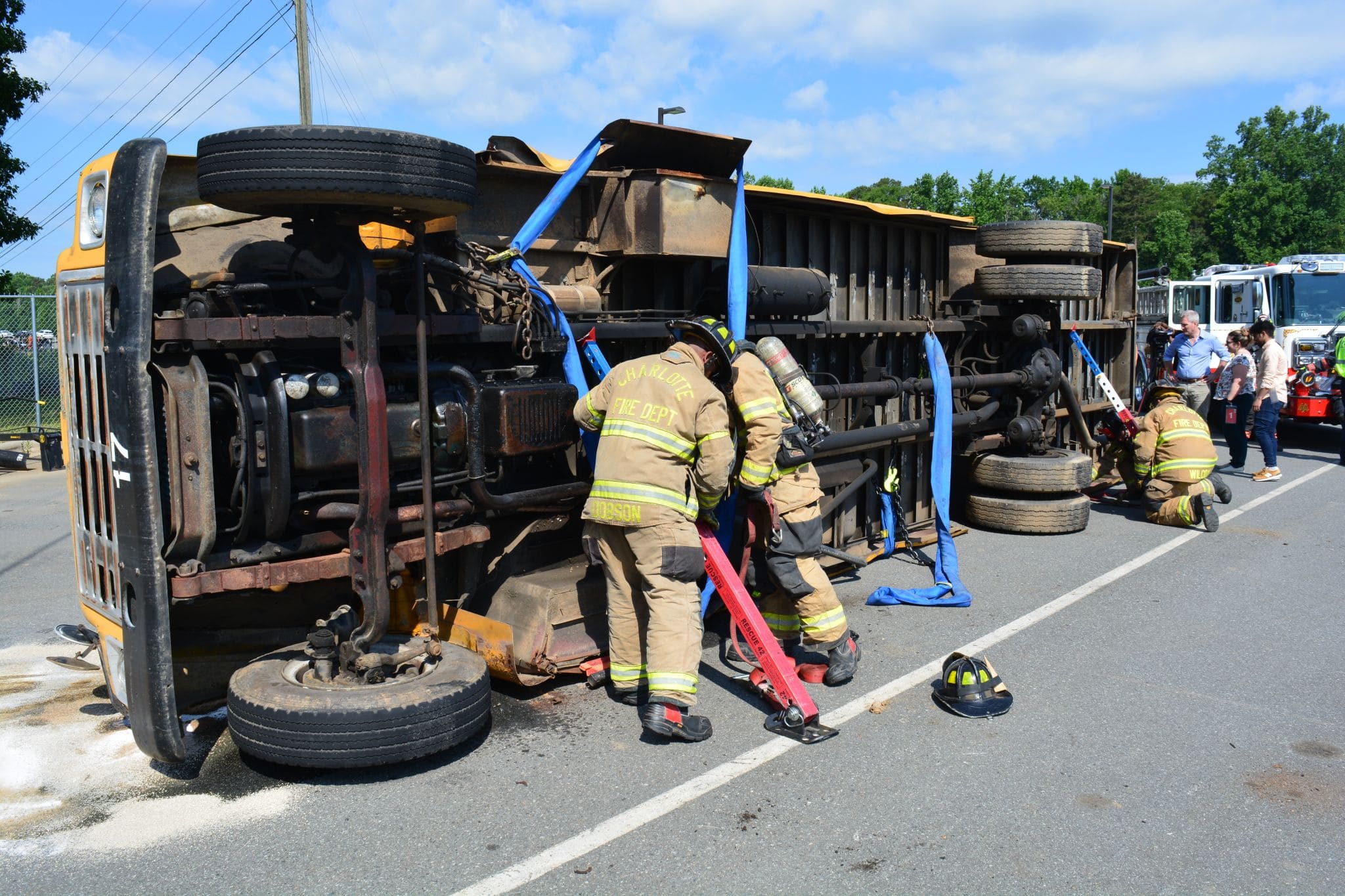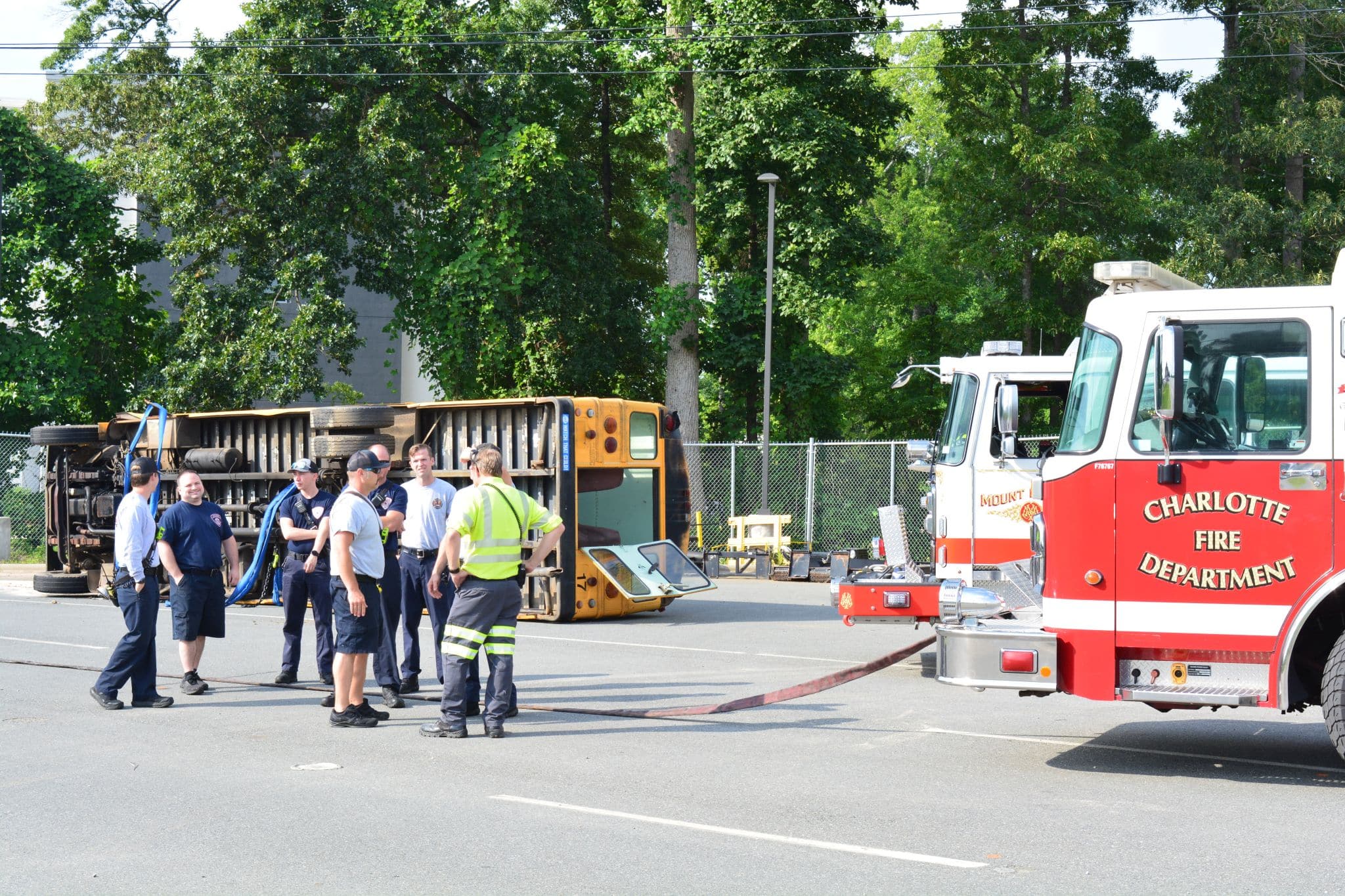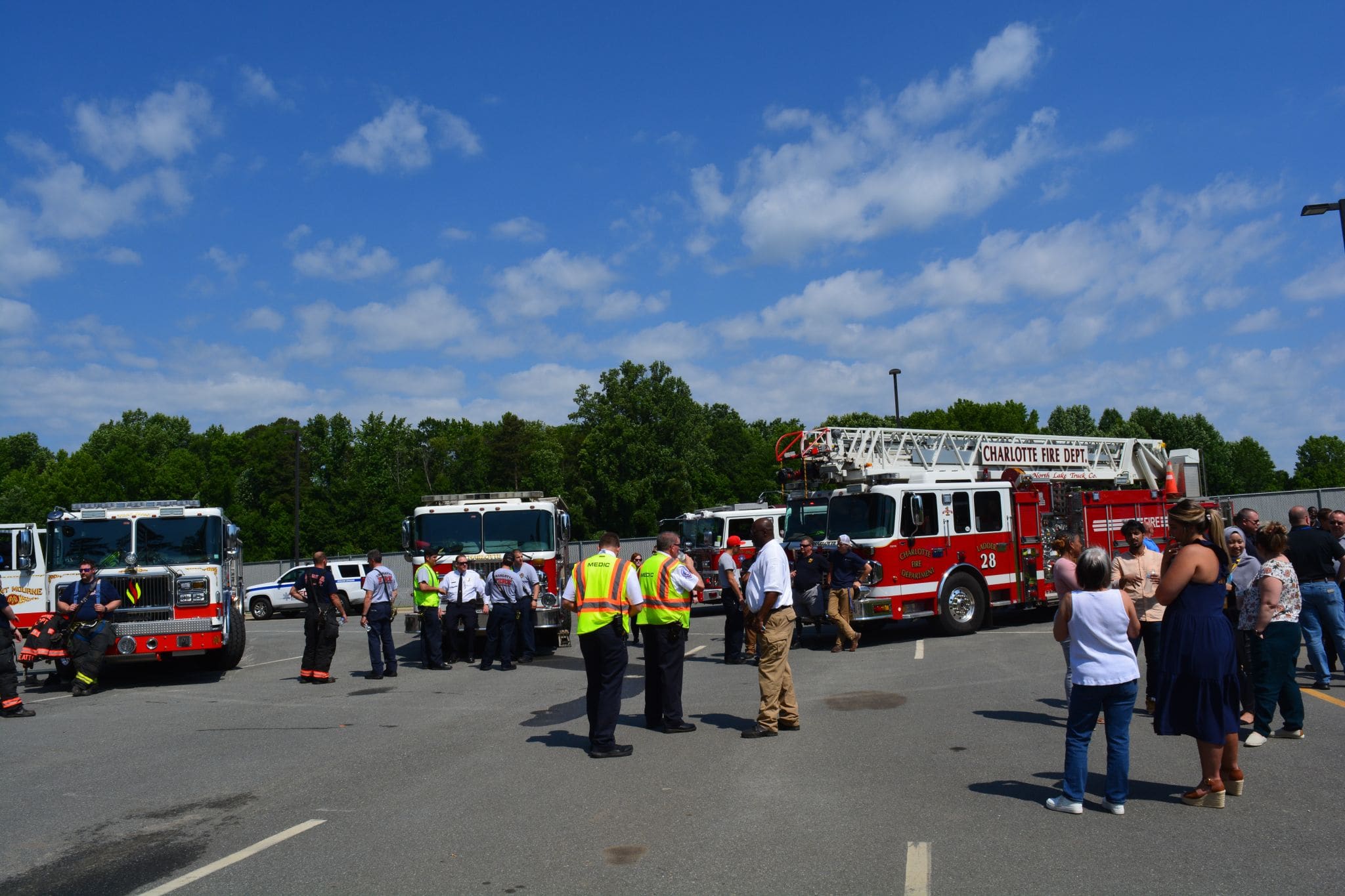Roadway Emergency Response Drill uses a flipped school bus, evacuated “mock” accident victims and a helicopter landing to simulate the real thing
It looked like a Hollywood movie set.
For four hours, the parking lot of the I-77 Express/I-77 Mobility Partners headquarters in Charlotte, North Carolina, swarmed with EMS first responders, area police officers, firefighters, sheriff deputies, highway police officers and I-77 employees, each playing their role in a large-scale emergency response drill complete with a flipped school bus, make-shift landing pad and medivac.
“A well-run scene can make the difference between life and death” said Greg Freeman, I-77 Express Safety Manager, who planned this event with Rob Boisvert, Corporate Affairs Director, earlier this month.
“They jumped at the idea to also train their staff in this situation and asked if we can designate potential landing spots along the roadway,” Rob said. “This proved to be a tremendous knowledge, process and coordination learning opportunity. I think everyone walked away feeling better prepared to respond to a large-scale incident.”
We have 26 miles of highway, so we interact with multi-jurisdictional agencies when an incident occurs. This exercise was designed to improve the efficiency, communication and cooperation between first responders and our Express Safety Service Patrol (SSP) technicians during a large-scale roadway incident
Employees acted out their roles as school children with specific injuries trapped in a turned-over school bus while first responders pried open the back doors using the jaws of life. They then pull the mock victims out and either place them on a stretcher for helicopter evacuation or sent them to a medic for evaluation.
This kind of run-through is critical because it allows all players to see which operations took place smoothly and what can be improved, from making sure they can safely and quickly use the jaws of life to evacuate victims to how to establish a helicopter landing site on the side of the roadway.
“Seeing the amount of space needed for everyone to do their role efficiently and safely underlines the importance of the ‘Move Over Law,’” says Greg. “We’ve got to get a lot of people on the ground responding and drivers are still passing us at 60, 70 miles an hour. This puts us all at risk.”
The lack of this space cost Tim Hayes, a former area Medic, both of his legs when he was struck by a semitruck at the scene of a crash while trying to save a victim. Hayes participated in the I-77 drill and presented his experience to participants, making a powerful and lasting impression.
“Not only do we want to save the patient, but we want to go home to our family at the end of the day as well,” Hayes said.
Both Hayes and Freeman said the best thing drivers can do for themselves and others when they see an accident is slow down, get off their phone and move over. Freeman added the number one contributing factor to accidents is distracted driving.
“We’ve definitely seen an uptick in accidents and the severity of the type of accident. A lot of people are using their cell phones and simply not paying attention.”
Greg and Rob invited the North Carolina Department of Transportation to participate and coordinated the collaboration of the different first response agencies and Atrium Health MedCenter Air, which provided the helicopter.




I-77 Emergency Drill







